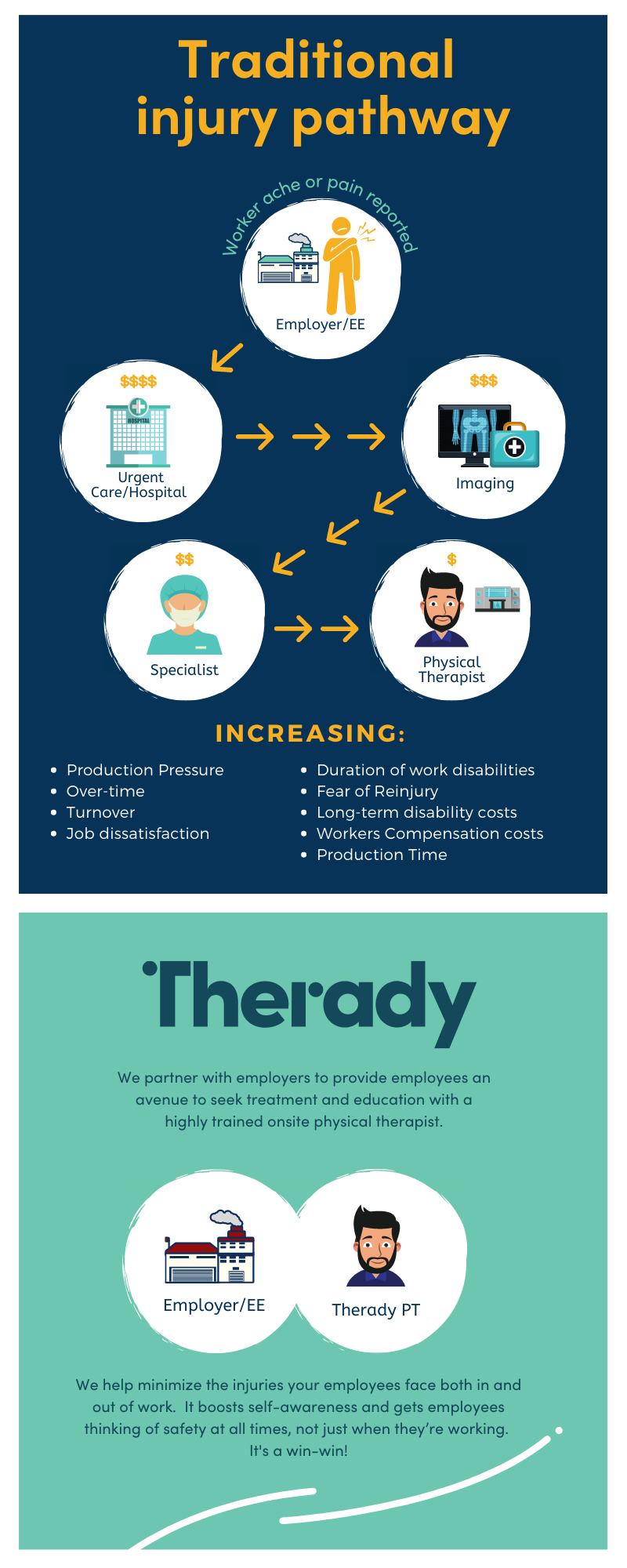The impact of a non-work related injury
The truth hurts. Every single day non-work related strains, sprains, and pulls make their way into the workplace. They are the physical remnants of the activities employees take on after work and on the weekends.
A weekend project to refresh the landscaping. Joining friends for the annual triathlon. Cleaning out the basement or playing in the city ball league tournament.
The list goes on and the aches and pains stack up.
Employers go to great lengths in promoting safety and preventing work injuries by educating, training, hiring safety personnel, adopting policies and safety programs in the hopes of minimizing the risk to employees -and to your bottom line.
But what about these non-work related injuries? As an employer should you be concerned?
YES.
Absenteeism
For many employees, the aches or pains they experience at home don't seem serious enough to seek professional care. Although they initially forgo seeking medical attention employees often will experience enough discomfort to take time off of work to recover. This is very common.
While taking a few days off doesn’t seem catastrophic, employers feel different kinds of aches and pains:
- lost work time
- loss of productivity
- sick pay
- paying for additional staff and training to cover the employee who is out
It’s no surprise that off-the-job injuries account for employers losing millions of work days each and every year.
Presenteeism
A majority of employees push their way through the coming days, weeks, and even months struggling with a non-work related injury.
They are the employees who feel they cannot miss work; whether it be financial reasons, lack of leave or sick time, or job commitment.
Though they stay at work while managing their aches and pains as best as they can, they’re likely not as engaged. The aches and pain they’re experiencing can quickly turn to distraction. It can affect the quality of their work and productivity, affect their decision-making, and determine how they participate in their work.
Although employers are steadily improving in the safety realm of the workplace, their bottom line is still taking a significant hit on injuries unrelated to the workplace.
Many of these non-work related aches and pains run a risk of going untreated and ignored until the employee can no longer manage the discomfort, or worse- their minor ache or pain has become more apparent and severe while working.
The Traditional Injury Pathway
What happens next? It’s all too familiar. A long (and more expensive) path that most often leads to the same ending- a physical therapist.

Minimizing Non-Work Related Injuries
As an employer, you can minimize the number of non-work related injuries that become work recordables and workers compensation claims. How?
More and more forward-thinking employers recognize the value of keeping their employees safe both on and off the job.
Many are adopting an innovative approach of providing a highly skilled on-site physical therapist to their health and safety strategies.
Consider the benefits of an onsite musculoskeletal expert who promotes injury mitigation to the aches and pains that your employees experience- whether they happened at work or at home.
This onsite expert proactively identifies and mitigates work aches and pains early on, including the non-work related aches and pains that find their way into the workplace.
The result? Employees soon recognize treatment can be sought at work to minimize or eliminate the possibility of an injury, and the pressure of ‘where’ the injury occurred is no longer the focus. Employee trust and honesty will grow. Employee engagement will increase. An employee’s desire to care for company resources and to return to work more quickly after an injury will increase too. Your employees will feel valued and recognize you’re invested in their overall health and wellbeing.





